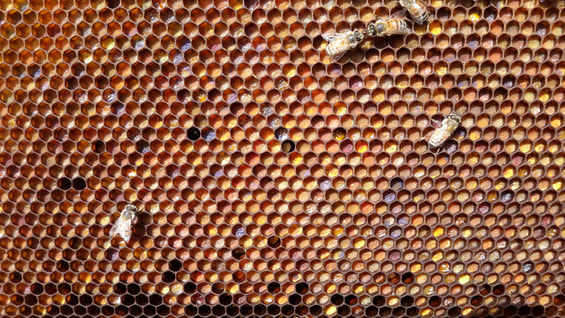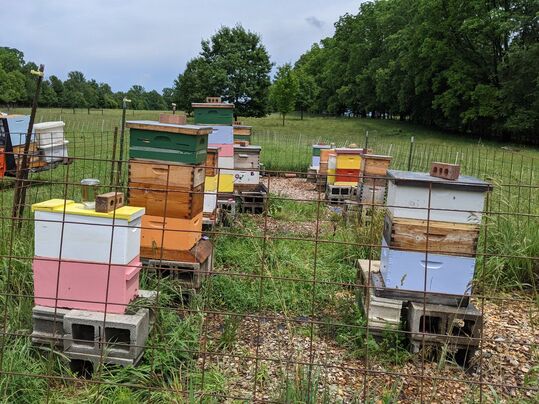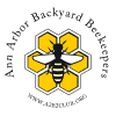 Anther Foraging bees get pollen all over their bodies as they collect it from the anther of the flower and store it in their corbicula or pollen basket located on their hindmost legs. They will also get some pollen on them when foraging for nectar in the flower. Tiny hairs all over the bee’s body and static electricity help to adhere the pollen grains to the bee. Since bees typically only forage from the same species of plant on each foraging trip (floral fidelity), they end up providing the plant with the valuable service of pollination by transferring the pollen from the anther (male organ) of one flower to the stigma (female organ) of another flower while foraging. Bread Pollen is the “sperm” of plants and is the honey bee’s source of protein, lipids, some vitamins and minerals, and micronutrients. The pollen is mainly consumed by bee brood and the nurse bees who produce protein-rich royal jelly from the hypopharyngeal glands in their heads. Pollen is made into bee bread in the hive by mixing it with honey and allowing some fermentation to occur. Making the fresh pollen into bee bread allows it to be stored for a longer period of time. Fresh pollen will get moldy and lose its nutritional value quickly. Bees prefer fresh pollen to old pollen and will “entomb” old, gross pollen with propolis and never go near it again. Frames of entombed pollen should be culled. Corbicula Bees will store the pollen from multiple different plant species together in the same cell. The pollen foragers empty their pollen baskets into the cell with their front legs and then pack the pollen down into the cell with their head. The pollen is normally stored right next to the brood or on frames close to the brood chamber. If the colony is suffering from a pollen dearth, the larvae will look dry and clear rather than plump and white and the liquid around them will also be clear instead of white. Some beekeepers feed dry pollen substitute or pollen patties (made from other protein sources like soy flour or skim milk) in the spring or during a pollen dearth. More Information: https://edis.ifas.ufl.edu/publication/IN868
0 Comments
Leave a Reply. |
AuthorJen Haeger is a new master beekeeper and board member of A2B2. Archives
August 2022
Categories
All
|


 RSS Feed
RSS Feed
